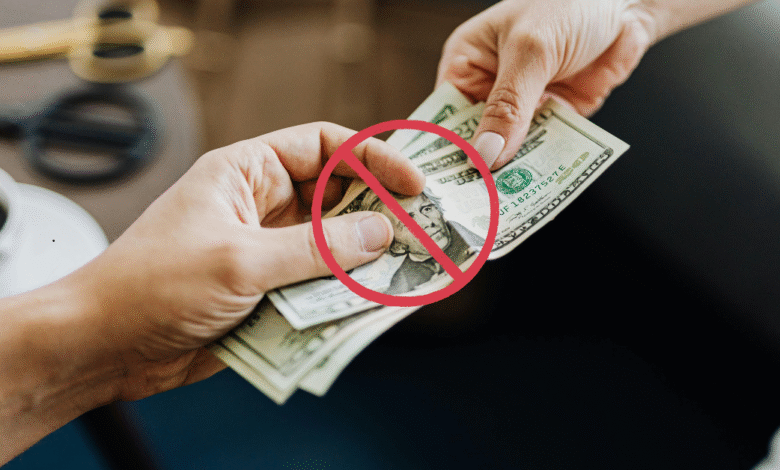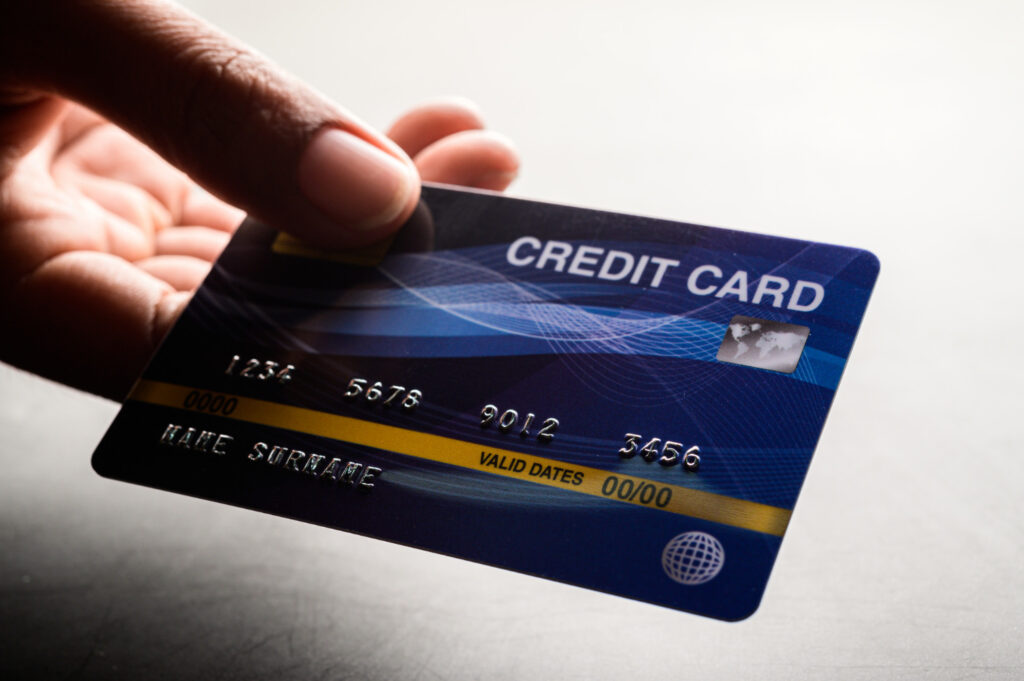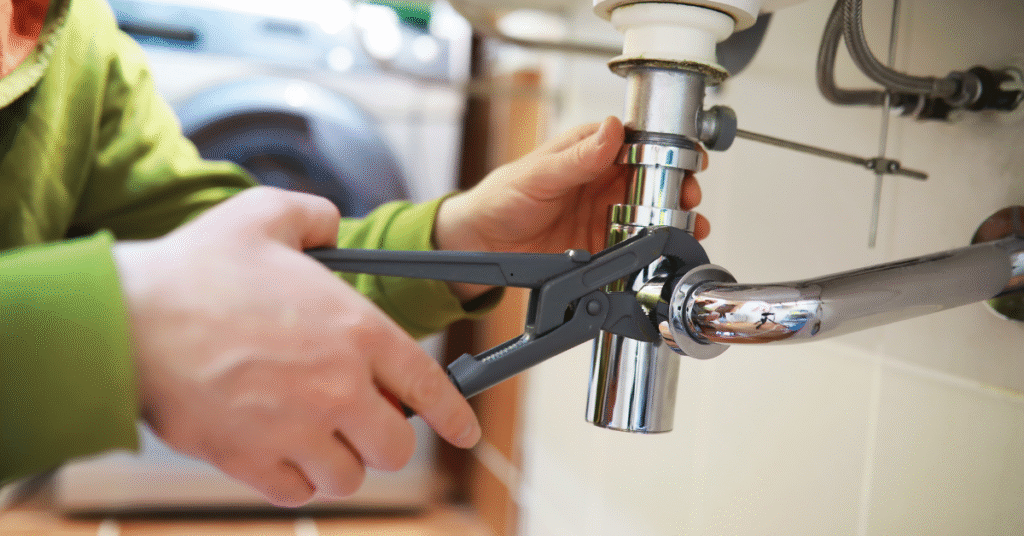15 Things You Should Never Pay For – Ever!

Look, I get it. Money feels like it’s slipping through your fingers faster than water, and you’re probably wondering where the heck it all goes. You work hard, earn a decent paycheck, and yet somehow you’re still living paycheck to paycheck. Sound familiar?
Here’s the thing: you’re probably throwing money at stuff that should be completely free or easily avoidable. I’m talking about sneaky expenses that drain your wallet without you even realizing it.
After years of managing my own finances (and making plenty of embarrassing mistakes along the way), I’ve learned that financial freedom isn’t just about earning more. It’s about being smart with what you already have.
So let’s talk about the things you should never pay for. Trust me, cutting these out will make a massive difference to your bank account.
15 Things You Should Never Pay For
Ready to stop wasting money on unnecessary stuff? Let’s jump into the top offenders that are probably eating away at your budget right now.
1. Bank Fees
Seriously, why are you paying your bank to hold YOUR money? It makes zero sense when you think about it.
Bank fees are like that annoying friend who keeps borrowing money and never pays you back. They’re small enough that you might not notice them at first, but over time? They add up to hundreds or even thousands of dollars.
I used to pay around $12 a month in maintenance fees until I woke up and realized I was literally paying someone to keep my own cash. That’s $144 a year down the drain for absolutely nothing.
How To Avoid Bank Fees
Shop around for banks that offer no-fee checking accounts. They exist, I promise. Online banks like Ally Bank, Chime, and Capital One 360 typically don’t charge monthly maintenance fees.
Also, keep an eye on your account balance to avoid overdraft fees. Set up alerts on your phone so you know exactly when you’re running low. Most banks will send you a text or email notification if your balance drops below a certain amount.
And here’s a pro tip: if you do get hit with a fee, call your bank and ask them to waive it. You’d be surprised how often they’ll do it, especially if you’re a long-time customer.
2. Foreign Transaction Fees
Travel is expensive enough without your credit card company taking an extra cut every time you swipe abroad.
Foreign transaction fees typically range from 1% to 3% of every purchase you make in another country. Doesn’t sound like much? Try buying a $50 dinner in Paris and paying an extra $1.50 just because your card company feels like it.
I learned this lesson the hard way during a trip to Thailand. I was using my regular credit card for everything, and when I got home and checked my statement, I nearly fell off my chair. Those “small” fees had added up to over $200.
Smart Alternatives
Get yourself a travel credit card with no foreign transaction fees. Cards like the Chase Sapphire Preferred or Capital One Venture don’t charge these fees, plus they often come with travel rewards.
If you’re not into credit cards, consider using a service like Wise (formerly TransferWise) for currency exchange. They offer much better rates than traditional banks and don’t hit you with hidden fees.
Also, when you’re abroad and a merchant asks if you want to pay in your home currency instead of the local currency, always choose local. That “convenience” of paying in dollars usually comes with a terrible exchange rate.
3. Food Delivery

Okay, I know food delivery is convenient. After a long day, the last thing you want to do is cook. But let’s do some quick math, shall we?
That $15 burger? With delivery fees, service fees, and tip, you’re looking at closer to $25 or $30. You’re literally paying double just to have someone bring it to your door.
I used to order food delivery at least three times a week. When I finally sat down and calculated how much I was spending, I was shocked. It was over $300 a month. That’s $3,600 a year on delivery fees alone!
Better Options That Save Money
If you really don’t feel like cooking, go pick up the food yourself. Most restaurants offer takeout without the crazy markup.
Or better yet, start meal prepping on Sundays. I know it sounds boring, but hear me out. Spend two hours making a big batch of something you actually like eating, portion it out, and boom. You’ve got lunch or dinner sorted for the week.
And if you absolutely must use delivery, at least sign up for a subscription like DoorDash DashPass or Uber Eats Pass. They waive delivery fees if you’re going to use the service regularly anyway.
4. Convenience Store Snacks

Ever grab a bag of chips at a gas station and think, “Wow, that was expensive”? Yeah, that’s because convenience stores mark up their prices like crazy.
That same bag of chips costs $1.50 at the grocery store but $3.50 at the convenience store. You’re paying more than double just because you didn’t plan ahead.
Plus, let’s be real. Most convenience store snacks are processed junk that’ll leave you feeling terrible an hour later. Your body and your wallet both deserve better.
Plan Ahead And Save
Buy snacks in bulk from regular grocery stores or warehouse clubs like Costco or Sam’s Club. Keep a stash in your car, your desk drawer, or your bag.
Even better, prep your own snacks at home. Cut up some veggies, portion out some nuts, or make a batch of homemade granola bars. It takes maybe 20 minutes and saves you a ton of money.
Trust me, once you get into the habit of planning ahead, you’ll wonder why you ever paid $4 for a tiny bag of trail mix.
5. Late Fees
Late fees are basically a tax on disorganization. And they’re completely avoidable.
Credit card late fees can be $25 to $40 per occurrence. Miss a few payments throughout the year, and you’ve just thrown away a couple hundred bucks for literally nothing.
But here’s what really gets me: late fees don’t just cost you money. They also trash your credit score, which can affect everything from getting approved for a car loan to renting an apartment.
Never Miss A Payment Again
Set up automatic payments for everything. Your credit cards, utilities, subscriptions. Everything that has a regular due date should be on autopilot.
If you’re worried about overdrafting your account, set the automatic payment for the minimum amount due, then manually pay extra when you can.
I also recommend using a calendar app or a budgeting app like Mint or YNAB (You Need A Budget) to track all your due dates in one place. Set reminders a few days before each bill is due.
And if you do accidentally miss a payment, call your creditor immediately. If it’s your first time, they’ll often waive the fee. Just ask nicely and explain what happened.
6. High-Fee Investments

Let’s talk about something that really grinds my gears: investment fees that eat away at your returns.
Some financial advisors and investment products charge fees of 1% to 2% annually. Doesn’t sound like much, right? Wrong. Over 30 years, a 1% fee can cost you literally hundreds of thousands of dollars in lost returns.
I’m not saying all financial advisors are bad. But you need to understand what you’re paying for and whether it’s actually worth it.
Low-Cost Investment Options
Index funds and ETFs (Exchange-Traded Funds) typically charge fees of 0.03% to 0.20%. That’s a massive difference.
Companies like Vanguard, Fidelity, and Schwab offer tons of low-cost investment options that’ll give you solid returns without the hefty fees.
If you want some guidance without paying through the nose, consider a robo-advisor like Betterment or Wealthfront. They charge around 0.25% annually, which is way better than traditional advisors.
The bottom line? Every dollar you save on fees is a dollar that stays invested and grows over time. Don’t let high fees rob you of your financial future.
7. Credit Card Interest

Credit card interest is one of the biggest wealth killers out there. And it’s completely optional.
The average credit card interest rate is around 20% APR. If you carry a $5,000 balance and only make minimum payments, you’ll end up paying thousands in interest alone.
I’ve been there. I once carried a balance on my credit card because I thought I was being smart by preserving my cash. Spoiler alert: I wasn’t. The interest charges were brutal.
How To Avoid Paying Interest
Pay off your credit card balance in full every single month. No exceptions.
If you already have credit card debt, prioritize paying it off as aggressively as possible. Consider using the debt avalanche method (paying off the highest interest rate first) or the debt snowball method (paying off the smallest balance first for quick wins).
Another option is to transfer your balance to a card with a 0% introductory APR offer. Cards like the Citi Simplicity or Chase Slate offer 12 to 18 months with no interest. Just make sure you pay it off before the promotional period ends.
And here’s a mindset shift that helped me: if you can’t afford to pay off a purchase in full at the end of the month, you can’t afford to buy it. Period.
8. Unnecessary Subscriptions

Subscriptions are sneaky little budget killers. You sign up for a free trial, forget about it, and suddenly you’re paying $9.99 a month for something you used once.
I recently did a subscription audit and found I was paying for four different streaming services, a meal kit subscription I never used, and a gym membership I hadn’t visited in six months. That was over $150 a month going down the drain.
Take Control Of Your Subscriptions
Go through your bank and credit card statements right now. Seriously, do it. You’ll probably find subscriptions you completely forgot about.
Cancel anything you don’t use regularly. And I mean regularly, not “I might use it someday.”
For streaming services, consider rotating them. Watch everything you want on Netflix for a couple months, cancel it, then switch to Hulu or Disney+. You don’t need all of them at once.
Use a subscription tracking app like Truebill or Trim. These apps will identify all your subscriptions and even help you cancel the ones you don’t want.
And before you sign up for any new subscription, ask yourself: “Will I actually use this enough to justify the cost?” Be honest with yourself.
9. Brand New Car

Buying a brand new car is one of the worst financial decisions you can make. There, I said it.
The second you drive that shiny new car off the lot, it loses about 20% of its value. After one year, it’s lost about 30%. That’s thousands of dollars evaporating into thin air.
I get the appeal. New cars smell amazing, they’ve got all the latest tech, and there’s something satisfying about being the first owner. But financially? It’s a disaster.
Buy Used And Save Thousands
Buy a car that’s 2 to 3 years old instead. You’ll get essentially the same car with low mileage, but you’ll pay way less because someone else already took the depreciation hit.
Look for certified pre-owned vehicles from reputable dealers. They come with warranties and have been inspected, so you’re not taking a huge risk.
Do your research on reliable car models. Brands like Toyota, Honda, and Mazda are known for lasting forever with minimal issues.
And here’s something most people don’t think about: insurance and registration costs are lower for used cars too. It’s savings all around.
10. Full-Price Clothing And Accessories

Paying full price for clothes is basically admitting you have more money than patience. And let’s be honest, most of us don’t have that kind of money to throw around.
Retailers mark up clothing by 50% to 100% or more. They’re counting on you to buy impulsively at full price, but they know they’ll eventually put everything on sale.
I used to think shopping sales meant I was getting lower-quality stuff. Then I realized I was just being snobbish and wasting money. The exact same shirt goes on sale a month later for half the price.
Shop Smart For Clothes
Wait for sales. Black Friday, end-of-season clearances, holiday sales. Retailers have sales constantly. Just be patient.
Sign up for email lists from your favorite stores. They’ll send you coupon codes and early access to sales. Just make sure to unsubscribe if you find yourself buying stuff you don’t need.
Check out discount retailers like TJ Maxx, Marshalls, or Nordstrom Rack. They sell name-brand stuff at a fraction of the cost.
And don’t sleep on thrift stores or online consignment shops like Poshmark, ThredUp, or Depop. You can find amazing deals on gently used (or even new with tags) clothing.
11. Impulse Purchases
Impulse buying is the enemy of financial stability. It’s that voice in your head that says, “You deserve this!” when you’re having a bad day.
I’m not going to pretend I’m perfect here. I’ve definitely bought things on impulse that I regretted later. Like that fancy coffee maker I used exactly twice before it became a dust collector.
Impulse purchases add up fast. A $20 item here, a $50 item there. Before you know it, you’ve blown through hundreds of dollars on stuff you don’t really need or even want.
Control Your Impulses
Use the 24-hour rule. If you see something you want, wait 24 hours before buying it. If you still want it the next day, then consider it. Most of the time, the urge will pass.
Unsubscribe from marketing emails. Retailers are really good at making you feel like you need something you don’t. Out of sight, out of mind.
Delete shopping apps from your phone. Make it harder to impulse buy by adding friction to the process.
And here’s a trick that works for me: before buying anything non-essential, calculate how many hours you’d have to work to pay for it. That $100 pair of shoes suddenly feels less appealing when you realize it represents 6 hours of work.
12. DIY Projects

Wait, hear me out on this one. I’m not saying you should never do DIY projects. I’m saying you shouldn’t PAY someone else to do simple projects you can easily do yourself.
Hiring someone to paint a room, hang shelves, or do basic home repairs can cost hundreds of dollars. Meanwhile, you could do it yourself for the cost of materials and a few hours of your time.
I used to think I wasn’t “handy” enough to do home projects. Then I watched a few YouTube videos and realized most of this stuff is way easier than it looks.
Learn Basic DIY Skills
YouTube is your best friend here. There are tutorials for literally everything. Need to fix a leaky faucet? There’s a video. Want to install a ceiling fan? There’s a video.
Start with small projects to build your confidence. Change your own air filters, touch up paint, install curtain rods. Once you realize you can do these things, you’ll feel empowered to tackle bigger projects.
Borrow or rent tools instead of buying them. Your neighbor probably has a drill you can borrow. Hardware stores rent out expensive tools by the day.
Just know your limits. Some projects (like electrical work or major plumbing) are worth hiring a professional for safety reasons. But most basic home maintenance? You’ve got this.
13. Rent
Okay, this one is a bit controversial, and I know not everyone is in a position to buy a home. But hear me out.
When you rent, you’re paying someone else’s mortgage. Every month, you hand over a chunk of money and get nothing in return except a place to live temporarily.
When you own a home, your monthly mortgage payment is building equity. You’re investing in an asset that (typically) appreciates over time.
I rented for years because I thought buying was too complicated and expensive. But once I ran the numbers, I realized I was throwing away tens of thousands of dollars that could have been going toward ownership.
Consider Homeownership
Look into first-time homebuyer programs. Many states and cities offer down payment assistance or lower interest rates for first-time buyers.
You don’t need a 20% down payment. FHA loans allow you to put down as little as 3.5%. VA loans (for veterans) require no down payment at all.
Run the numbers for your specific situation. Use online calculators to compare the total cost of renting versus buying over 5, 10, and 20 years.
And if buying isn’t realistic for you right now, that’s okay. Just make sure you’re saving aggressively so you can make it happen eventually. Renting should be temporary, not permanent.
14. Overpriced Financial Products
Some financial products are designed to make the seller rich, not you. I’m looking at you, whole life insurance and high-fee annuities.
Whole life insurance sounds great in theory. It’s insurance plus an investment! But in reality, the fees are astronomical, and the returns are terrible compared to just buying term life insurance and investing the difference.
Annuities can be even worse. Some come with fees of 3% or more annually, plus surrender charges if you want to access your money early. It’s a trap.
Stick To Simple, Low-Cost Products
For life insurance, buy term life insurance. It’s cheap and straightforward. You pay a small premium, and if you die during the term, your family gets a payout. Simple.
For investing, stick to low-cost index funds and ETFs like I mentioned earlier. Don’t let a smooth-talking salesperson convince you that complicated products are better.
If a financial product seems too complicated to understand, that’s a red flag. The best financial products are simple and transparent.
And always ask about fees upfront. If someone is cagey about fees or tries to downplay them, run away.
15. Luxury Items

Look, I’m not going to tell you that you can never treat yourself. But luxury items are often things you should never pay for if you’re trying to build wealth.
Designer handbags, expensive watches, luxury cars. These things are status symbols, not investments. They don’t make you richer. They make you poorer.
I used to think that buying expensive things would make me feel successful. But you know what actually made me feel successful? Having money in the bank and not stressing about bills.
Redefine What Luxury Means
True luxury is financial freedom. It’s being able to quit a job you hate. It’s not worrying about an unexpected car repair. It’s having options.
If you want to splurge on something, make sure it’s after you’ve hit your savings goals and paid off high-interest debt. And even then, ask yourself if it’s really worth it.
Consider spending money on experiences instead of things. Travel, concerts, nice dinners with friends. Research shows that experiences bring more lasting happiness than material possessions.
And if you absolutely must have that luxury item, buy it used or wait for a sale. You can find designer stuff on consignment sites for a fraction of the retail price.
Final Thoughts
Here’s the truth: building wealth isn’t about making more money (though that helps). It’s about being intentional with the money you already have.
Every dollar you waste on unnecessary fees, impulse purchases, or overpriced products is a dollar that’s not working for you. It’s a dollar that could be invested, saved, or used to pay off debt.
I’m not saying you need to live like a monk and never enjoy anything. But I am saying you need to be smart about where your money goes.
Cut out the things you should never pay for. Redirect that money toward things that actually matter. Your future self will thank you.
And remember, personal finance is personal. What works for me might not work for you. But the principles are universal: spend less than you earn, avoid unnecessary expenses, and invest in your future.
Now go audit your spending and see how much money you can free up. I bet you’ll be surprised. 🙂








